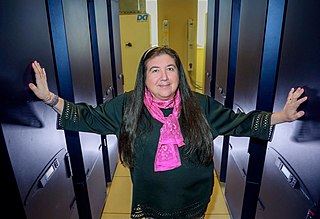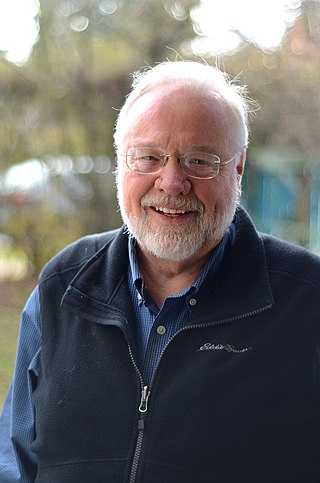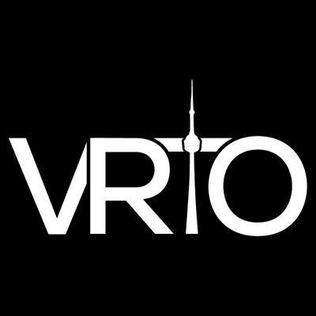Publication
VR in the Schools , a peer-reviewed publication of the Virtual Reality and Education Laboratory, has been distributed in both print and electronic versions. Permission is granted to reproduce and/or electronically distribute this journal in its entirety and without cost. Currently, VR in the Schools is an occasional publication, usually published only in electronic form.
The co-editors of VR in the Schools are: Dr. Veronica S. Pantelidis and Mr. David Vinciguerra. Dr. Lawrence Auld is co-editor emeritus.
The editorial advisors are: Dr. Tassos Mikropoulos, Department of Primary Education, University of Ioannina, Ioannina, Greece; Dr. Melissa M. Selverian, Temple University, Philadelphia, Pennsylvania, USA; Ms. Debra S. Pylypiw, Art Educator, White Oak High School, Jacksonville, North Carolina, USA.

Virtual reality (VR) is a simulated experience that employs pose tracking and 3D near-eye displays to give the user an immersive feel of a virtual world. Applications of virtual reality include entertainment, education and business. Other distinct types of VR-style technology include augmented reality and mixed reality, sometimes referred to as extended reality or XR, although definitions are currently changing due to the nascence of the industry.

The Tulane University School of Medicine is located in New Orleans, Louisiana, United States and is a part of Tulane University. The school is located in the Medical District of the New Orleans Central Business District.
The Virtual Reality Applications Center (VRAC) is a research center within the Engineering Teaching and Research Complex (ETRC) at Iowa State University (ISU) and is involved in advanced research of virtual reality (VR), augmented reality (AR), human computer interaction (HCI), visualization, and is home to the world's highest resolution immersive virtual reality facility, known as the C6.
Jay David Bolter is the Wesley Chair of New Media and a professor in the School of Literature, Media, and Communication at the Georgia Institute of Technology. His areas of study include the evolution of media, the use of technology in education, and the role of computers in the writing process. More recently, he has conducted research in the area of augmented reality and mixed media. Bolter collaborates with researchers in the Augmented Environments Lab, co-directed with Blair MacIntyre, to create apps for entertainment, cultural heritage and education for smart phones and tablets. This supports his theory regarding remediation where he discusses "all media functions as remediators and that remediation offers us a means of interpreting the work of earlier media as well".
VR in the Schools is a peer-reviewed journal of the Virtual Reality and Education Laboratory (VREL), published by East Carolina University. VR in the Schools addresses issues of incorporating virtual reality into the education system. The journal started out as a printed quarterly, but changed to an online-only publishing format starting with volume 3 and was described by its editors in 2011 as an occasional publication.
Thomas Albert "Tom" DeFanti is an American computer graphics researcher and pioneer. His work has ranged from early computer animation, to scientific visualization, virtual reality, and grid computing. He is a distinguished professor of Computer Science at the University of Illinois at Chicago, and a research scientist at the California Institute for Telecommunications and Information Technology (Calit2).
Gregory Peter Panos is an American writer, futurist, educator, strategic planning consultant, conference / event producer, and technology evangelist in augmented reality, virtual reality, human simulation, motion capture, performance animation, 3D character animation, human-computer interaction, and user experience design.

Lawrence Jay Rosenblum is an American mathematician, and Program Director for Graphics and Visualization at the National Science Foundation.

Carolina Cruz-Neira is a Spanish-Venezuelan-American computer engineer, researcher, designer, educator, and a pioneer of virtual reality (VR). She is known for inventing the cave automatic virtual environment (CAVE). She previously worked at Iowa State University (ISU), University of Louisiana at Lafayette, University of Arkansas at Little Rock, and she is currently an Agere Chair Professor at University of Central Florida (UCF).
Anders Gronstedt, Ph.D. is a Swedish-born American author, public speaker and entrepreneur. He is an advocate of virtual reality and augmented reality training, transmedia storytelling and game-based learning and president of the Gronstedt Group.

Thomas A. Furness III is an American inventor, professor, and virtual reality pioneer based in Seattle, Washington. He is a Professor in the University of Washington Department of Industrial & Systems Engineering, and the founder of the Human Interface Technology Lab at the University of Washington and its sister labs at the University of Canterbury and University of Tasmania. Known for his contributions in developing human interface technology, he has earned the title, "Grandfather of Virtual Reality."

Started in 2015 by Keram Malicki-Sanchez as a virtual reality Meetup Group in Toronto, VRTO launched the VRTO Virtual & Augmented Reality World Conference & Expo in June 2016 – an international exhibition and professional conference exploring arts, culture and science through immersive technologies. Its inaugural year – held at the Mattamy Centre – featured keynotes from University of Toronto Professor Steve Mann, Hollywood film director Brett Leonard – director of The Lawnmower Man, Chief Digital Officer Ana Serrano of the Canadian Film Centre and Phil Lelyveld of USC.
Shafi Ahmed is a chief surgeon, teacher, futurist, innovator, professor and entrepreneur.
Virtual reality (VR) is a computer application which allows users to experience immersive, three dimensional visual and audio simulations. According to Pinho (2004), virtual reality is characterized by immersion in the 3D world, interaction with virtual objects, and involvement in exploring the virtual environment. The feasibility of the virtual reality in education has been debated due to several obstacles such as affordability of VR software and hardware. The psychological effects of virtual reality are also a negative consideration. However, recent technological progress has made VR more viable and promise new learning models and styles for students. These facets of virtual reality have found applications within the primary education sphere in enhancing student learning, increasing engagement, and creating new opportunities for addressing learning preferences.

Virtual reality applications are applications that make use of virtual reality (VR), an immersive sensory experience that digitally simulates a virtual environment. Applications have been developed in a variety of domains, such as education, architectural and urban design, digital marketing and activism, engineering and robotics, entertainment, virtual communities, fine arts, healthcare and clinical therapies, heritage and archaeology, occupational safety, social science and psychology.
Karen Rafferty is the Head of the School of Electronics, Electrical Engineering and Computer Science at Queen's University Belfast. She works with virtual and augmented reality for health care and automation.

Eric R. Williams is an American screenwriter, professor, cinematic virtual reality director, and new media storyteller. He is known for developing alternative narrative and documentary techniques that take advantage of digital technologies.
Immersive learning is a learning method which students being immersed into a virtual dialogue, the feeling of presence is used as an evidence of getting immersed. The virtual dialogue can be created by two ways, the usage of virtual technics, and the narrative like reading a book. The motivations of using virtual reality (VR) for teaching contain: learning efficiency, time problems, physical inaccessibility, limits due to a dangerous situation and ethical problems.

Samantha Gorman is an American game developer known for her combination of narrative, theatricality and gaming in VR environments, and for introducing gestural interactions in touchscreen narratives. She has won multiple awards for her work, both in the field of games and in electronic literature and new media writing. Gorman co-founded the computer art and games studio Tender Claws in 2014 and has been an assistant professor at Northeastern University since 2020.








